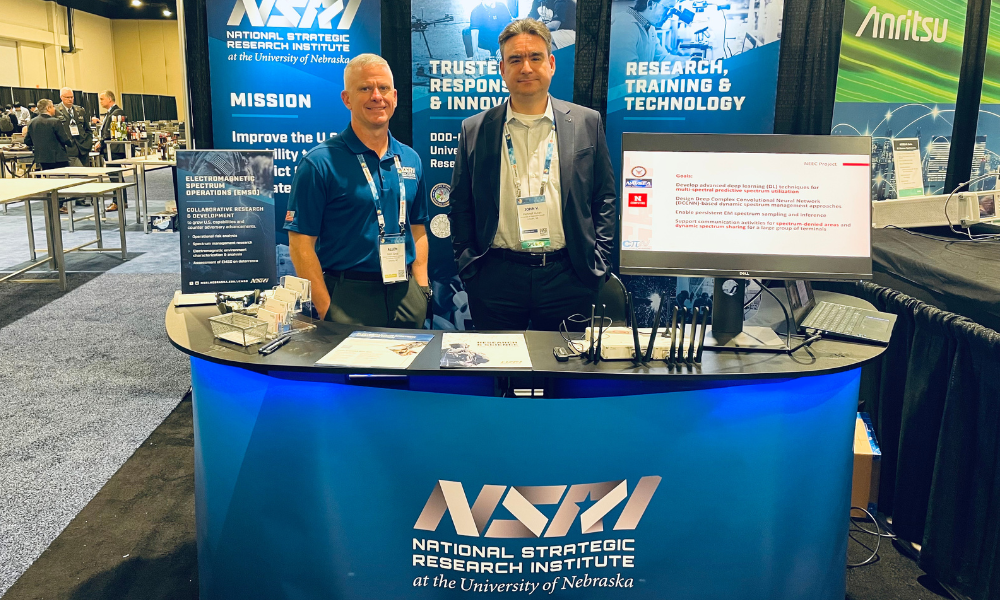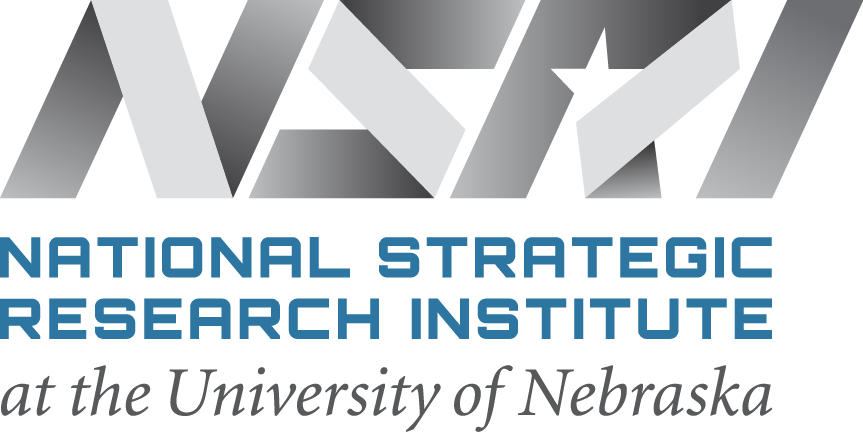
The National Strategic Research Institute (NSRI) at the University of Nebraska (NU) has launched several research initiatives within the recently awarded project, “Electromagnetic environment instrumentation, data collection and reporting analysis.”
Contracted by U.S. Strategic Command’s (USSTRATCOM) Joint Center for Electromagnetic Readiness (JCER) Facility, Nellis Air Force Base, Nevada, the $871,526 project allows NSRI to contribute its evaluation and modeling expertise to help JCER communicate meaningful and actionable electromagnetic spectrum data to the services.
"It is essential for our military to stay ambitious and effective in what has become a very contested operational environment," said Maj. Gen., USAF (Ret.) Rick Evans, NSRI executive director. "Through this effort, NSRI continues to demonstrate our capabilities and responsiveness to contribute insights in this mission space."
Under Unified Command Plan 22, USSTRATCOM is designated as the Department of Defense’s (DOD) operational lead for the EMS Enterprise. As the command’s DOD-designated University Affiliated Research Center, NSRI and the University of Nebraska System (NU) are well positioned to collaborate with JCER, which ensures deploying units are prepared to function in complex electromagnetic operating environments.
Through this project, NSRI will deliver several scientifically rigorous technical reports to help JCER draw precise, accurate and relevant conclusions regarding the performance of platforms, systems, tactics, techniques and procedures applicable to the Joint Force.
Initial tasks underway evaluate enhanced over-the-air instrumentation and data capture capabilities as well as conduct electromagnetic operational environment characterization. Future research will focus on the evaluation of emerging technologies and their integration into future EMSO evaluation architecture.
"The project is pairing empirical data and engineering analysis with JEMSO subject matter expertise to provide greater confidence in the conclusions provided to the services," said Allen Geist, NSRI director for joint electromagnetic spectrum operations. "The JCER mission affords the greatest range of real-world EMSO signals and data that are not available anywhere outside of high-end Exercises throughout the year."
To build its capacity, NSRI has hired an on-site electromagnetic environment analyst at JCER who will collaborate with NU researchers as needed throughout the effort.
Broadly, NSRI and NU actively contribute operational risk analysis, spectrum management research, electromagnetic operational environment characterization and analysis and assessment of EMSO on deterrence in this space. Expertise and technology are drawn from several labs on the NU campuses, including but not limited to:
- Cyber-Physical Networking (CPN) Lab
- Emergent Quantum Materials and Technologies (EQUATE) Center
- Nebraska Intelligent MoBile Unmanned Systems (NIMBUS) Lab
"The EMS can feel ambiguous given it is a non-physical operating environment," Geist said. "But it is critical to understand that the EMS transcends all physical domains and is required for conducting military operations—not to mention the day-to-day activities of civilians.
"The U.S. has ceded some ground in this space, but there is a significant push to once again assert our dominance, and our team from NSRI and the University of Nebraska is proud and enthusiastic to contribute any way we can."
###
About the National Strategic Research Institute
Through the National Strategic Research Institute at the University of Nebraska leading scientists deliver innovative national security research, technology, product and strategy development, training and exercises, and subject matter expertise to the Department of Defense and other federal agencies. One of only 15 DOD-designated University Affiliated Research Centers in the country, NSRI is sponsored by U.S. Strategic Command and works to ensure the United States’ safety and preparedness against increasingly sophisticated threats. Read about our mission.

